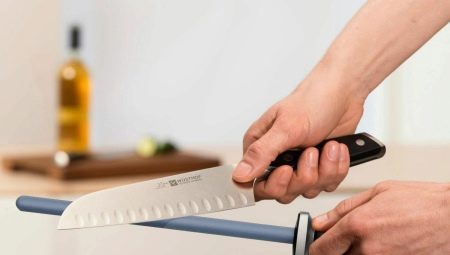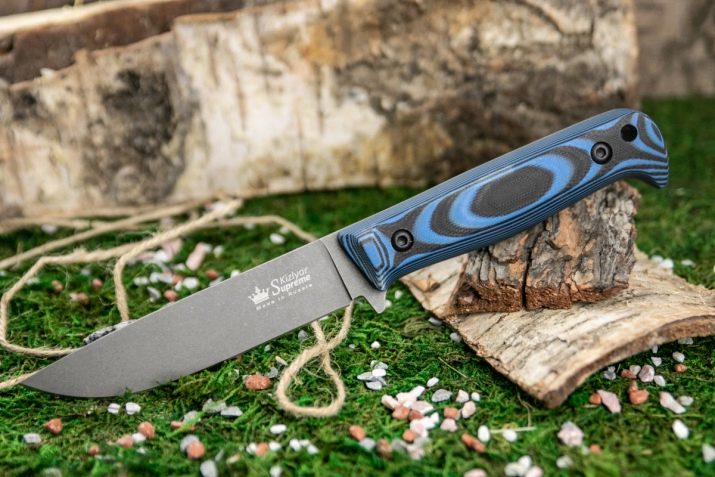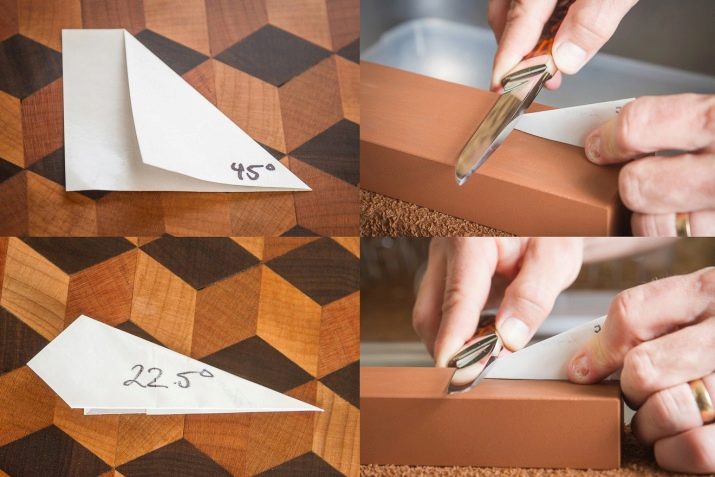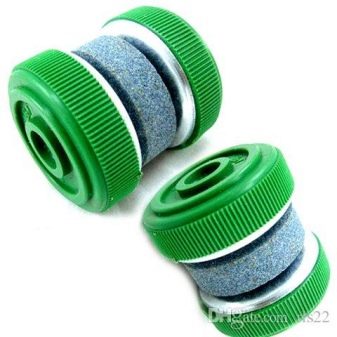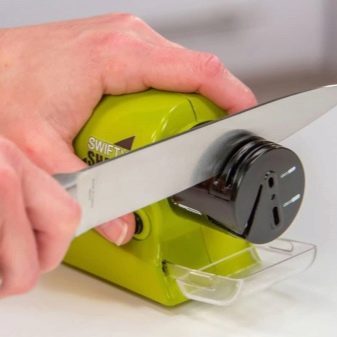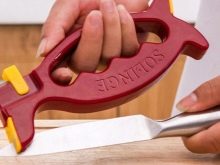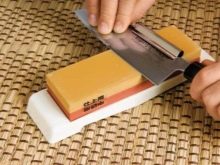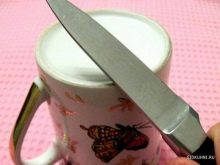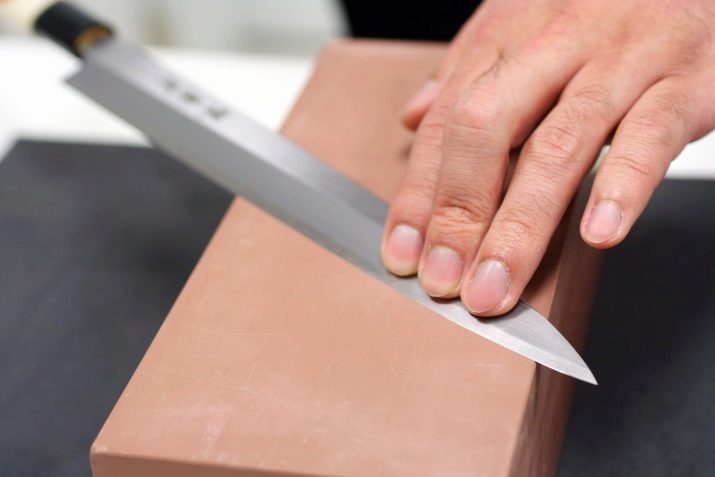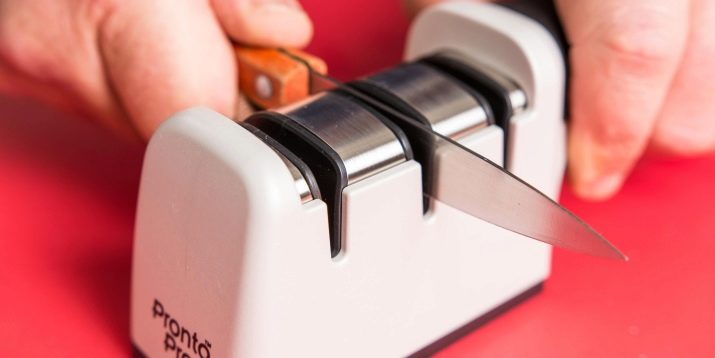Even people who rarely do cooking have a knife. This is perhaps the most important tool in the kitchen of any housewife. Over time, the properties of the blade are lost: when cutting vegetables and other products, the steel deforms, the blade becomes blunt, and cooking becomes a real torment. Sharpening helps to restore the shape and properties of the deformed blade.
Materials for the production of knives
A large role in the sharpness and service life of the knife is played by the appearance of steel or the materials from which it is made. It is worth paying attention to when choosing the way in which the blade will be sharpened. Most often steel for knives is made from an alloy of iron and carbon. Various metal impurities are added to such alloys. This may be chromium, nickel, molybdenum. Acuity, term of use, the formation of plaque and rust - for all this is responsible for the quality of steel.
For example, an alloy with the addition of chromium or nickel over time can lead to oxidation of the blade. There will be a metallic taste in the food. But such products remain sharp for a long time. Steel with carbon and molybdenum will help to avoid such troubles. Knives made from such alloys are less susceptible to corrosion.
Knives from ceramics are popular with some housewives. The blade for quite a long time remains sharp. But the very edge and handle of the knife quickly break due to its fragility, which makes ceramic knives impractical to use in the kitchen.
Damascus steel is worth mentioning. The quality and sharpness of the blade at a high level. Such knives can retain their property and purpose for years and do not require sharpening. But in everyday life almost no one uses Damascus steel knives. Most often it is intended for the manufacture of cold arms. The cost of such blades is very high.
Selection of sharpeners
First you need to figure out how to sharpen the blades with a sharpener, and how to set the angle for comfortable and safe work. You should know that the only accurate angle to sharpen the tip, no. Its value depends on the material from which the knife is made, as well as the purpose of the tool. Universal and the most optimal angle depending on the purpose of the blade:
- the usual kitchen knife used in the household purposes - 30 - 35 °;
- fish knife - 25 °;
- cutting knife - 25–30 °;
- for cutting and chopping vegetables - 35 °;
- table knife - 55–60 °.
Nowadays, a lot of ways to sharpen. These are grinding stones, bars, and round steel rods with a handle, and even machines with abrasive circles. Roller sharpening is more popular among housewives. It is very convenient to use them. A small device consists of special millstones (rollers), which are covered with an abrasive or diamond coating.
As a rule, such rollers are initially located at an angle of 45 ° to the blade, and it is no longer possible to set the grinding angle on your own. Since the angle of sharpening is 40–50 ° to the cutting edge, it is impossible to sharpen scissors, table knives or other cutting tools on it. And also there are grinding systems for knives. They allow you to adjust the angle of sharpening. With their help, you can get a very good result.
Such a grinding system consists of a set of bars. In addition to bars (3-5 pieces), the set includes abrasive paste. The main advantage of blade sharpening systems is the ability to handle any cutting products and devices, even ceramic ones. Systems are durable and safe, give the opportunity to set the exact angle. Replacing the grinding stone, you can get the perfect sharpness of the blade. Grinding systems are quite expensive, and they are used more in production than in everyday life.
A more modern and simple method is to use Chinese round sharpener, which will become an indispensable assistant at home. Using it is quite simple. It is only necessary to insert the knife between the two abrasive rollers. This universal device is suitable for those who want to quickly cope with the procedure.
High-quality and fast results can be obtained using electrical appliance. In a few minutes with an electric sharpener you can return the knives to their former sharpness, as well as polish them. A special automated system chooses the angle of grinding, which makes it even more convenient to use.
Compact products
Pocket sharpening, they are also called hand, are small in size, they can be carried with them. Most often they have a ring on them, which makes them look more like a key chain. Small size sharpeners come in several forms:
- whetstone or stones;
- mini brass knuckles;
- improvised means.
Sharpening stones are capable of giving sharpness not only to the blades of various knives, but also scissors, and other products. Sharpening stones are divided into several types. There are so-called Japanese water stones. They are available with different grit abrasive surfaces, which helps in a short time to quickly sharpen a knife or any other tool. In addition, these products have a budget cost, and the life is very high.
Before working, abrasives of this type should be soaked in water for 20 minutes. Air must come out of the stone. If the stone is used dry, the abrasive will quickly become clogged with dust and steel particles, the stone will become smooth and lose its properties.
Sharpener-brass knuckles is the cheapest of all existing devices. This very budget model is a good option for temporary use. Such sharpening will be suitable for application at the dacha or during an outdoor recreation. The handle of the device is worn on the arm, like brass knuckles. The second hand holds the knife and drives the tip processing area. Usually sharpener-brass knuckles has 2 zones: ruling and polishing. This sharpening has a minus: when turning, the knife may slip and injure the hand.
Handy tools will also become indispensable helpers, if there is no special sharpener. It may be ordinary cobblestone, second knife, leather belt or glass. In all cases, be careful. You can also sharpen the blade on the protruding ring on the bottom of the ceramic plate. The main thing - that the surface was a little rough.
Triple
Triple knife sharpeners are gaining popularity. They are easy to maintain and work. The device consists of a handle, on the end of which there is an abrasive material, divided into 3 troughs (connectors): with diamond chips, from tungsten steel, ceramics. Diamond plating helps damaged blades regain shape. The connector, made of tungsten steel, gives the blades a V-shaped, and ceramics completes the process with high-quality polishing.
On how to sharpen knives, see the next video.
